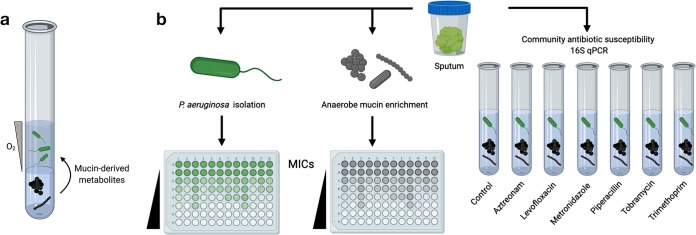FIG 1.
(a) Mucin-based cross-feeding model of CF microbiota. P. aeruginosa (upper portion of solution) is grown in agar without bioavailable nutrients. Anaerobes (lower portion of solution) are grown with mucin as a carbon source, liberating small metabolites for P. aeruginosa growth. In turn, P. aeruginosa creates an oxygen gradient allowing anaerobes to thrive. Under these cooperative conditions, inhibition of anaerobes with antibiotics to which P. aeruginosa is intrinsically resistant constrains overall community growth (13). (b) Antibiotic MICs were determined for both P. aeruginosa and anaerobic consortia derived from patient samples. The effect of community growth on antibiotic susceptibility (i.e., the weakest link) was then determined using our mucin coculture model. 16S rRNA gene sequencing and qPCR were used to quantify and characterize sputum bacterial community growth in response to each antibiotic.

